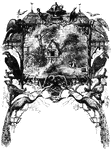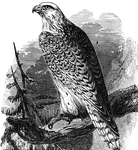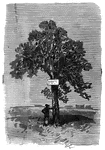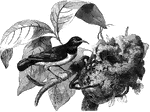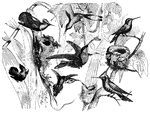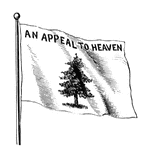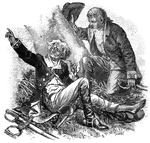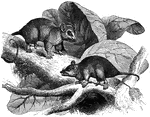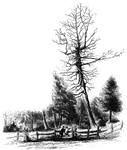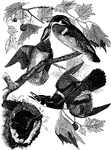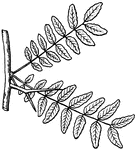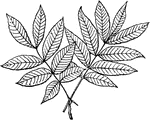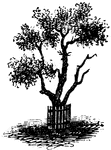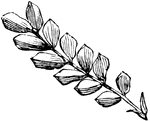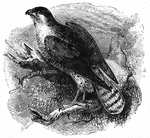
Goshawk
"The American goshawk &mdash the black-cap haw of Wilson &mdash A. atricapillus which has been…

Great Short-Eared Owl
Genus ascalaphia, a large owl, native to southern Europe and northern parts of Egypt.
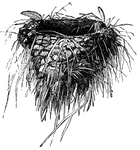
Nest of the Common European Swallow
Nest of the common European swallow, which can be found in old wells and mines, under the roofs of barns…
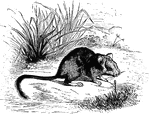
White Footed Tree Rat
Hapalotis Albipes. "Nearly the size of a rabbit, but of mouse-like form, and is chiefly found in New…

Battle of the Wilderness
"The battle of the Wilderness, between General Grant and General Lee, May 5th and 6th, 1864. Our sketch…

Mockingbirds Attacking a Rattlesnake
A flock of mocking-birds attacking a rattlesnake in a tree, which was threatening a nest.
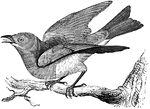
Bluebird
The bluebird feeds on a diet of insects and spiders in the summer and berries in the winter. It usually…
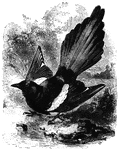
Magpie
The magpie builds its nest in a high tree or a lofty hedge. It is omnivorous, but prefers meat, such…
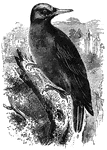
Great black Woodpecker
Chiefly making its habitat in Northern Europe, the great black woodpecker uses its long, sharp bill…
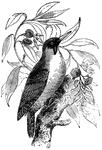
Green Woodpecker
The green woodpecker is found throughout Europe, and uses its beak to make holes in tree trunks to roost…
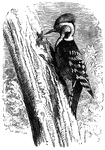
Middle Spotted Woodpecker
Found in Southern Europe, the middle spotted woodpecker has a black coat, with a crimson underside and…
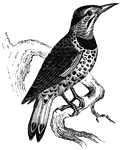
Golden-Winged Woodpecker
The golden-winged woodpecker is known for burrowing its own holes into live trees to use as a nest.
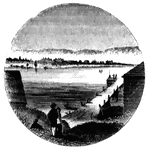
Chimney Point
Chimney Point Landing. This view is taken from the green in front of the inn at Chimney Point, looking…
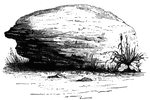
Brant's Rock
Brant's Rock. This rock, which is about four feet high, lies in a field on the left of the road leading…

Continental Bills
Fac-simile of the Continental Bills. The paper on which these bills were printed was quite thick, and…

Ridgefield
Place of the barricade, Ridgefield. This view is at the north end of the main street. It was taken from…

Golden Tree Snake
"Four to five feet long; color yellowishgray, cleaning with a pale golden hue, and dotted with whitish…
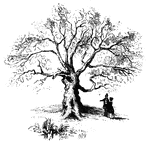
Charter Oak
The Charter Oak. This venerable relic is still virgorous, and is a "gnarled oak" indeed. It stands upon…

Pine-Tree Shilling
The Pine-Tree Shilling. This is a fac-simile of the first money coined in America. The mint-master,…
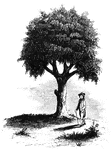
Liberty Tree
"Liberty Tree. I am indebted to the Hon. David Sears, of Boston, for this sketch of the 'Liberty Tree,'…
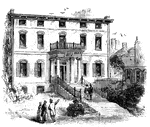
Province House
"The Province House. The Province House, the residence of the colonial governors, is still standing,…
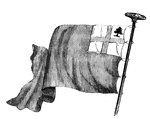
New England Flag
"The New England flag. This is copied from an old Dutch work, preserved in the library of the New York…
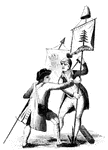
Pine-Tree Flag
"The Pine-Tree Flag. This engraving is a reduced copy of a vignette on a map of Boston, published in…

Providence Tavern
"Old Tavern in Providence. This view is from the market, looking north. The building stands on the east…
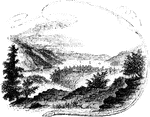
Fort Montgomery
"View near Fort Montgomery. This view is from an eminence near the mountain road, about three quarters…
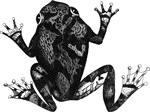
Squirrel Tree-toad
"Is of a brownish or light ash-color, and is found under logs and the bark of decayed trees." — Goodrich,…
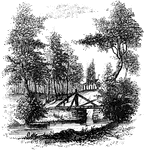
Sleepy Hollow
"Bridge over Sleepy Hollow Creek. Ichabod, according to Irving, in the Legend, returning from…
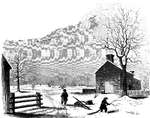
Princeton battle-ground
"View of the battle-ground near Princeton. This view, looking north, is from the carriage gate of Mr.…
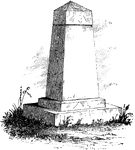
Treaty Monument
"Treaty Monument. This monument stands near the intersection of Hanover and Beach Streets, Kensington,…
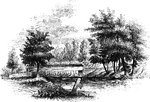
Chad's Ford
"View at Chad's Ford. This view is from the east bank of the Brandywine, looking southwest. The ford…

Chub
"Frequents deep places in the quiet parts of steams, sheltering itself usually under a bush or tree…

Jamestown Island
"Distant view of Jamestown Island. This view is from the north side of what was once a marsh, but now…
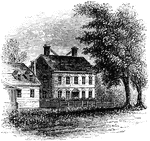
Nelson Mansion
"The Nelson Mansion. This view is from the street looking northwest. A long wooden building, with steep…
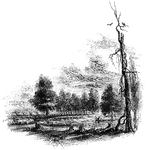
Regulator Battle-ground
"The Regulator battle-ground. This view is from the south side of the Salisbury Road, which is marked…
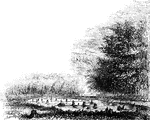
Pyle's Pond
"Pyle's Pond. About a quarter of a mile northwest from this pond, is the spot where the battle occurred.…
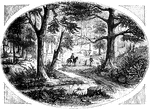
King's Mountain Battle-Ground
"View at King's Mountain battle-ground. This view is from the foot of the hill, whereon the hottest…
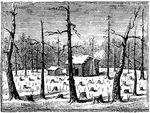
Cowpens
"Scene at the Cowpens. This name is derived from the cirumstance that, some years prior to the Revolution,…
!["View from the site of Fort Cornwallis. Fort Cornwallis occupied the ground in the rear of the Episcopal church, now a grave-yard. This view is from within the inclosure, looking northeast, and includes a portion of Schultz's bridge, the Savannah River, and Hamburg upon the opposite bank. In the foreground is seen portions of the church-yard wall, and upon the brink of the river below are [African Americans] employed in placing bales of cotton upon the wharves for transportation to the sea-coast. The wharves are two stories in height, one to be used at low water, the other when the river is 'up.' There were remains of the ditch and embankments of the fort within the grave-yard when I was there; and the trench leading to the water-gate, where the 'Pride-of-India tree is seen, was very visible."—Lossing, 1851](https://etc.usf.edu/clipart/14100/14143/ft-cornwalli_14143_mth.gif)
Fort Cornwallis
"View from the site of Fort Cornwallis. Fort Cornwallis occupied the ground in the rear of the Episcopal…

Bronx
"Place where the British crossed the Bronx. This view is from the southeastern side of the Bronx, a…
